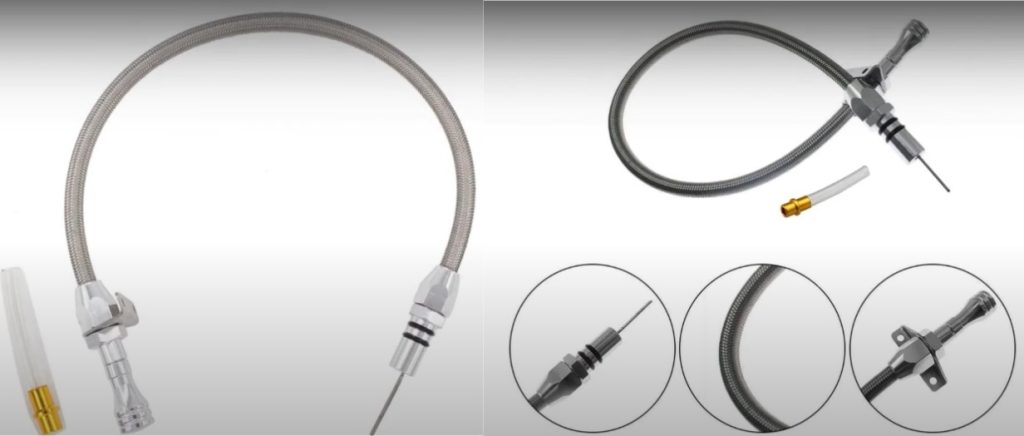In the auto field, transmission tubes, commonly known as tranny tubes, are crucial components for the functionality and reliability of a vehicle’s transmission system.
This article will talk about the definition, importance, types, maintenance, and selection of the right tranny tube for your vehicle.
Key Takeaways
- Tranny tubes are essential for transferring transmission fluid and maintaining the optimal temperature of the transmission system.
- There are mainly two types of tranny tubes: metal, typically used in older vehicles, and rubber, often found in newer models.
- Proper maintenance and regular inspection of tranny tubes can prevent common problems such as leaks and wear.
- The choice between metal and rubber tranny tubes depends on factors like vehicle model, durability needs, and resistance to corrosion.
- Replacing tranny tubes can be a DIY task, but it requires careful attention to detail to avoid common issues like improper installation.
What Is a Tranny Tube
“Tranny Tube“ in a car typically refers to the transmission fluid dipstick tube. The transmission fluid dipstick tube is a component in an automatic transmission system that allows access to the transmission fluid for checking and maintenance purposes.
The term “tranny” is a colloquial abbreviation for “transmission,” and “tube” refers to the hollow cylinder-shaped component that houses the dipstick and provides access to the transmission fluid reservoir.
Tranny Tube Functions and Roles in Transmission Systems
Tranny tubes generally have two main functions.
They carry fluid between the transmission, cooler, and radiator. This fluid helps to keep everything running smoothly. It’s important because it makes sure your car shifts gears without trouble and stays cool.
Tranny tubes also help control the pressure and temperature of the fluid. If the fluid gets too hot or the pressure isn’t right, your car won’t work as it should. Here’s what tranny tubes do for your car:
- Move Transmission Fluid. Transmission fluid keeps everything running smoothly by making sure parts don’t rub against each other too much.
- Keep the Transmission Cool. When you drive, the transmission gets hot, and if it gets too hot, it can break. The tubes carry the fluid to a cooler place, like the radiator, so it doesn’t overheat.
- Pressure Regulation. They keep the fluid pressure steady, so your gears shift smoothly. If the pressure is off, your car might not shift gears smoothly, or it could even damage the transmission.
Taking care of your tranny tubes means your car will run better and last longer. Whether your car has metal tubes or rubber hoses, looking after them is a must. This way, you can enjoy a smooth ride and avoid costly repairs.
Types of Tranny Tubes and How to Choose One
When you’re choosing a tranny tube for your vehicle, you’ll find two main types: metal and rubber.
Metal tranny tubes are often made from steel or aluminum. They’re strong and can handle a lot of heat and pressure, which is great for older cars. But, they can rust or corrode over time. On the other hand, rubber tranny tubes are made from rubber or synthetic stuff. They’re flexible, easy to put in, and don’t rust. They’re a good pick for newer cars. However, they might not last as long as metal ones and need to be checked more often for wear and tear.
When you pick a tranny tube, think about how it will work with your car. Different cars need different tranny tubes. The tube needs to fit your car’s make, model, and transmission type. Also, make sure it’s the right size and length so it fits without needing changes.
Here’s a quick look at the main points about tranny tube materials:
- Metal tubes: Strong, handle heat well, can rust over time.
- Rubber tubes: Flexible, no rust, may wear out faster.
As you can understand, the right tranny tube helps keep your transmission fluid cool and your car running smoothly. If you’re not sure which one to choose, ask a car mechanic for help.
Maintenance and Troubleshooting
Identifying Common Problems
When you’re dealing with tranny tubes, it’s good to know the signs of trouble. Leaks are one of the most common issues. You might see puddles of transmission fluid under your car or notice that the fluid level is low. This can lead to your transmission slipping or not shifting right. Here’s a quick list of problems and their causes:
- Leaks: Caused by wear and tear, rust, or loose fittings.
- Corrosion and Rust: Happens due to moisture, road salt, or just getting old.
- Blockages: Can be from dirt or other stuff getting in the way inside the tube.
If your transmission is overheating or you smell something burning, that’s bad news. Also, if you hear weird noises when the gears change, that’s a sign something’s not right. Keep an eye on your tranny tubes and take care of them to avoid these problems.
Preventative Measures and Regular Maintenance
To keep your car running smoothly, it’s important to take care of the tranny tubes. Check the tubes often for any signs of trouble like wear or leaks. If you find a problem, fix it right away. This stops bigger issues from happening.
Make sure to keep an eye on the transmission fluid too. The level and the quality of the fluid can tell you if something’s wrong. If the fluid is low or looks dirty, you might have a leak or another problem.
It’s a good idea to get a pro to look at your transmission system now and then. They can make sure everything is working as it should. Whether your car has metal tubes or rubber hoses, taking care of them is a must for a good drive.
Here’s a simple list to help you remember what to do:
- Inspect tranny tubes often for damage or leaks.
- Keep an eye on the fluid level and quality.
- Get your transmission checked by a pro sometimes.
DIY vs. Professional Replacement
When it comes to replacing tranny tubes, you might wonder if you can do it yourself. You need the right tools and know-how to do it right. If you’re handy with cars and have done similar jobs before, you might be able to handle it. But, if you’re not sure, it’s best to go to a vehicle pro. They have the skills to make sure it’s done well.
Signs of Tranny Tube Failure
Knowing when your tranny tube is failing is key to keeping your car running smoothly. If you see fluid under your car, that’s a big sign something’s wrong. This fluid is often red or brown. It’s your car telling you there’s a leak. Here’s what to look out for:
- Fluid puddles under your vehicle
- A burning smell when you drive
- Trouble shifting gears
- Strange noises from under your car
These signs mean your tranny tube might be in trouble. It’s like when you get a cold and your nose runs. Your car is trying to tell you it needs help. If you notice any of these, it’s time to check your tranny tube.





